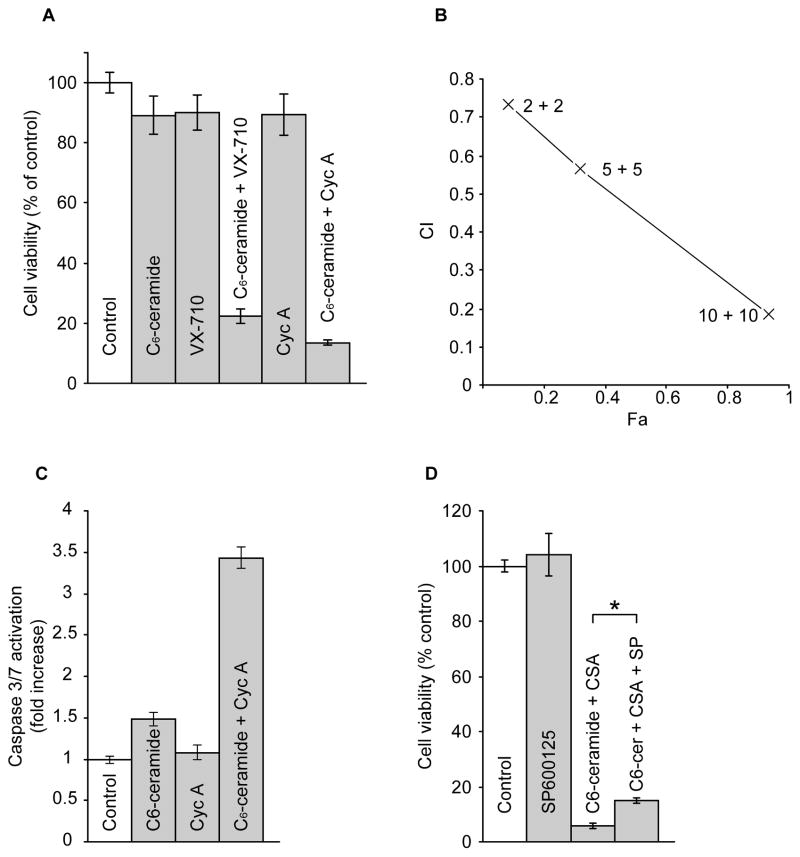Fig. 5.
Effect of P-gp antagonists on C6-ceramide cytotoxicity and caspase activity in NCI/ADR-RES cells, and the effect of JNK inhibition on viability. (A) Cell viability. Cells in 96-well plates were grown with the agents indicated (C6-ceramide, 4 μg/ml; VX-710 and cyclosporin A, 5 μM) for 72 hr. Viability was measured by MTS assay. Results given as mean ± S.D., n = 6 cultures/condition. (B) C6-ceramide/cyclosporin A synergy. CI (Combination Index) vs. Fa (Fraction affected) plot obtained from 72 hr exposure of cells to increasing concentrations of C6-ceramide and cyclosporin A combinations. CI of 0.73 indicates moderate to slight synergism; CI of 0.56 indicates synergism; CI of 0.2 indicates strong synergism. Fa calculated from cell viability assays (MTS), n = 6 cultures/condition. (C) Caspase 3/7 activity. Cells in 96-well plates were exposed to C6-ceramide (4 μg/ml), cyclosporin A (10 μM) or the combinations, for 24 hr, after which caspase activation was measured by the Promega caspase 3/7 assay. Cyc A, cyclosporin A. Results represent the mean ± S.D., n = 3 cultures/condition. (D) Effect of SP600125 (SP) on C6-ceramide/Cyc A cytotoxicity. Cells in 96-well plates were cultured for 72 hr with C6-ceramide (4 μg/ml)/Cyc A (10 μM) in the absence and presence of JNK inhibitor SP600125 (10 μM). *p<0.01. Data are the mean ± S.D., n = 6 cultures/condition. Repeat experiments yielded identical results.

